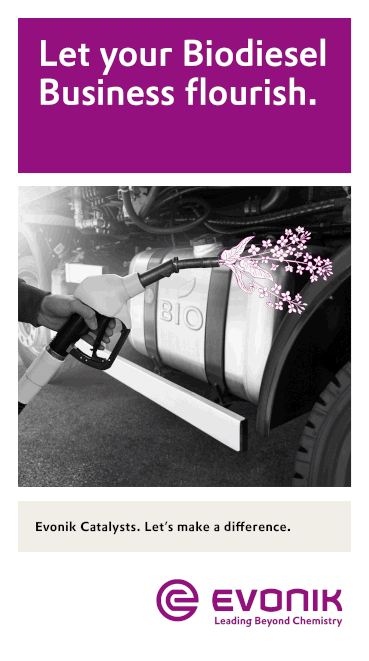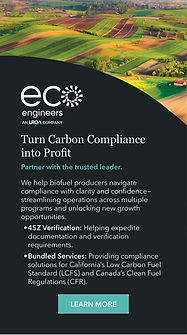UC Riverside researcher develops innovative biomass-pretreatment technology for improved lignin utilization
- Jules Bernstein, UC Riverside
- Feb 14, 2024
- 4 min read

When it comes to making fuel from plants, the first step has always been the hardest—breaking down the plant matter.
A new study finds that introducing a simple, renewable chemical to the pretreatment step can finally make next-generation biofuel production both cost-effective and carbon neutral.
For biofuels to compete with petroleum, biorefinery operations must be designed to better utilize lignin.
Lignin is one of the main components of plant cell walls.
It provides plants with greater structural integrity and resiliency from microbial attacks.
However, these natural properties of lignin also make it difficult to extract and utilize from the plant matter, also known as biomass.

“Lignin utilization is the gateway to making what you want out of biomass in the most economical and environmentally friendly way possible,” said Charles Cai, an associate research professor at University of California Riverside. “Designing a process that can better utilize both the lignin and sugars found in biomass is one of the most exciting technical challenges in this field.”
To overcome the lignin hurdle, Cai invented a process called co-solvent enhanced lignocellulosic fractionation (CELF).
It is an innovative biomass-pretreatment technology.
“CELF uses tetrahydrofuran or THF to supplement water and dilute acid during biomass pretreatment,” Cai said. “It improves overall efficiency and adds lignin-extraction capabilities. Best of all, THF itself can be made from biomass sugars.”
A landmark Energy & Environmental Science paper details the degree to which a CELF biorefinery offers economic and environmental benefits over both petroleum-based fuels and earlier biofuel production methods.
The paper is a collaboration between Cai’s research team at UCR, the Center for Bioenergy Innovation managed by Oak Ridge National Laboratories, and the National Renewable Energy Laboratory, with funding provided by the U.S. DOE’s Office of Science.
In it, the researchers consider two main variables: what kind of biomass is most ideal and what to do with the lignin once it’s been extracted.
First-generation biofuel operations use feedstocks like corn, soy and sugarcane as raw materials.
Second-generation operations use nonedible plant biomass as feedstocks.
Examples of biomass feedstocks include wood residues from milling operations, sugarcane bagasse and corn stover, all of which are abundant low-cost byproducts of forestry and agricultural operations.
According to DOE, up to a billion tons per year of biomass could be made available for the manufacture of biofuels and bioproducts in the U.S. alone, capable of displacing 30 percent of our petroleum consumption while also creating new domestic jobs.
Because a CELF biorefinery can more fully utilize plant matter than earlier second-generation methods, the researchers found that a heavier, denser feedstock like hardwood poplar is preferable over less carbon-dense corn stover for yielding greater economic and environmental benefits.
Using poplar in a CELF biorefinery, the researchers demonstrate that sustainable aviation fuel (SAF) could be made at a break-even price as low as $3.15 per gallon of gasoline equivalent.
The current average cost for a gallon of jet fuel in the U.S. is $5.96.
The U.S. government issues credits for biofuel production in the form of renewable identification number (RIN) credits, a subsidy meant to bolster domestic biofuel production.
The tier of these credits issued for second-generation biofuels, the D3 tier, is typically traded at $1 per gallon or higher.
At this price per credit, the paper demonstrates that one can expect a rate of return of over 20 percent from the operation.
“Spending a little more for a more carbon-rich feedstock like poplar still yields more economic benefits than a cheaper feedstock like corn stover, because you can make more fuel and chemicals from it,” Cai said.
The paper also illustrates how lignin utilization can positively contribute to overall biorefinery economics while keeping the carbon footprint as low as possible.
In older biorefinery models, where biomass is cooked in water and acid, the lignin is mostly unusable for more than its heating value.
“The older models would elect to burn the lignin to supplement heat and energy for these biorefineries because they could mostly only leverage the sugars in the biomass—a costly proposition that leaves a lot of value off the table,” Cai said.
In addition to better lignin utilization, the CELF biorefinery model also proposes to produce renewable chemicals.
These chemicals could be used as building blocks for bioplastics and food- and drink-flavoring compounds.
These chemicals take up some of the carbon in the plant biomass that would not get released back into the atmosphere as CO2.
“Adding THF helps reduce the energy cost of pretreatment and helps isolate lignin, so you wouldn’t have to burn it anymore,” Cai said. “On top of that, we can make renewable chemicals that help us achieve a near-zero global-warming potential. I think this moves the needle from ‘gen-two’ biofuels to ‘gen-two-plus.”
In light of the team’s recent successes, DOE’s Bioenergy Technology Office has awarded the researchers a $2 million grant to build a small-scale CELF pilot plant at UCR.
Cai said he hopes that demonstrating the pilot plant will lead to larger-scale investment in the technology, as harnessing energy from fossil fuels adds to global warming and hurts the planet.
“I began this work more than a decade ago because I wanted to make an impact,” Cai said. “I wanted to find a viable alternative to fossil fuels and my colleagues and I have done that. Using CELF, we have shown it is possible to create cost-effective fuels from biomass and lignin and help curb our contribution of carbon emissions into the atmosphere.”


































